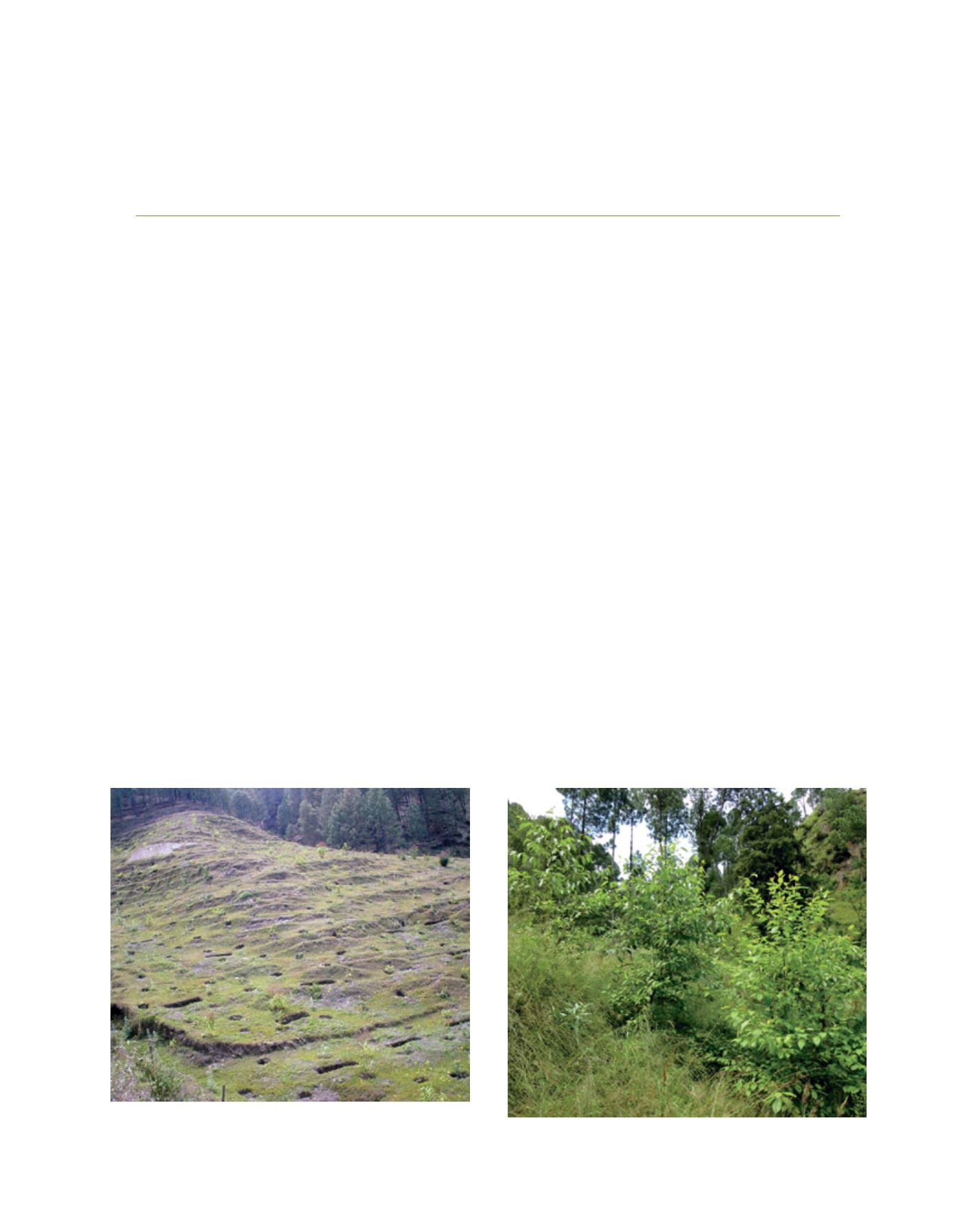

[
] 159
Wasteland rehabilitation for sustainable
agriculture in the Indian Himalayan region
G.C.S. Negi, Scientist E; P.P. Dhyani, Director; and R.C. Sundriyal, Scientist F,
Govind Ballabh Pant Institute of Himalayan Environment and Development, Kosi-Katarmal, Almora, India
L
and degradation is a global problem caused by
a variety of factors and processes including soil
erosion by water/wind and deterioration in the
physical, chemical and biological properties of soil.
These lead to long-term loss of the productive capacity
of land, biodiversity and associated ecosystem goods
and services. In India, land degradation estimates vary,
ranging from 53-188 million hectares.
1
In the Indian Himalayan region (IHR), which extends
over 2,500 km in length and 240 km in width, waste-
lands account for about 34 per cent, and the area under
wasteland varies from one state to another. This is mainly
because about 22 per cent of land in the IHR is either
under snow or barren, and does not support any biologi-
cal growth. Out of 59 million hectares total geographical
area of IHR, 7.3 million hectares are degraded commu-
nity land, 13.5 million hectares are degraded government
forests, and 1.2 million hectares are abandoned agricultural
land. Of the 23 wasteland categories,
2
those such as land
with open and dense scrub, current and abandoned shift-
ing cultivation area, underutilized/degraded forest scrub,
agriculture land inside notified forest land, and degraded
pastures/grazing land comprise a total of 32 per cent of
the IHR area, and these can be rehabilitated for biomass
production and to reduce the pace of soil erosion. This
region is thus faced with increasing land degradation and
wasteland generation and reduced livelihood opportuni-
ties. For example, during 2005/06 and 2008/09 remarkable
increases in land with dense scrub (3 per cent), open scrub
(18 per cent), degraded pasture (15 per cent) and mining
wasteland (6.8 per cent) have been recorded in the region.
However, decreases ranging from 0.4 per cent to 33 per
cent in all other categories of wasteland have also been
recorded during this period.
3
Subsistence agriculture is the mainstay of rural people in
the IHR. The majority of holdings are marginal (<2 ha), and
agriculture is heavily dependent on the surrounding forests
and pastures for a variety of ecosystem services such as
fodder for livestock; forest floor litter for livestock bedding
and fertilizing the crop fields; wood for fuel; agricultural
implements and other minor timber needs. Furthermore,
people derive a variety of wild edibles and raw materials for
cottage industries from the forests that generate income and
employment and contribute to livelihoods. Thus continu-
ing biotic pressure on various categories of land year-round
Image: GBPIHED
Image: GBPIHED
A community pasture land taken up for silvi-pasture development: note the
trenches dug along contours for soil and rainwater conservation
Silvi-pasture developed on a community wasteland
L
iving
L
and
















